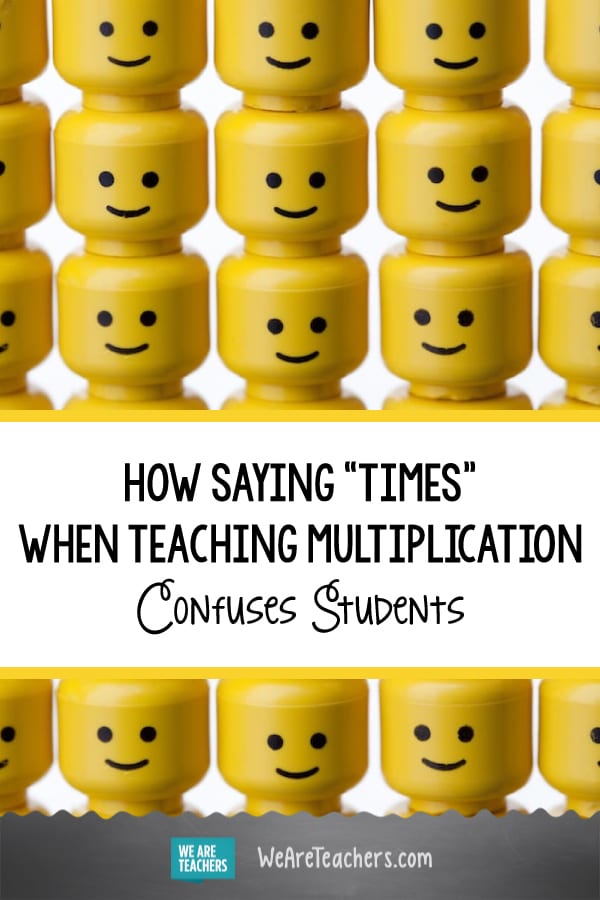Math vocabulary can be tricky, full of words that students have never heard before or words that have alternate meanings in math than they do in daily life. (I’m looking at you “mean.”) Choosing our words carefully can have a big impact on student understanding, especially when it comes to multiplication. Make this small change to your multiplication vocabulary today, so students can better visualize and comprehend this important concept.
The word “times” doesn’t mean anything to students.
Often a student will say the multiplication symbol means “times.” But when pushed further, they can only define it as a synonym for multiplication. (An informal canvas of friends at dinner revealed the same level of awareness.)
“Times” is one of those words we use without thinking. However, it’s imprecise and doesn’t further our students’ understanding of multiplication.
Instead, say “groups of”
A small tweak in the language here will make a big difference in building student conceptualization. Without formal instruction, children know what it means to have a certain number of groups of something. Even very young students organize toys into pairs or understand when snacks are evenly distributed, or not.
[contextly_auto_sidebar]
“Times” gives them nothing to hang onto, but thinking about groups does. Students may not be able to readily visualize “6 times 10,” but “6 groups of 10” is easy to imagine and even draw.
One group more and one group less
When you say “groups of,” then comparisons between multiplication problems are made plain.
Instead of 6×10 and 7×10 appearing to be two completely separate facts, students can hear the relationship between the two facts right there in the language. What is the difference between six groups of 10 and seven groups of 10? It’s a natural leap to start thinking about one group more or one group less.
Does this look familiar?
20×15=300
21×15=301
When you ask students to compare 20×15 and 21×15, the common mistake is that they say the product is only one more.
Instead, encourage students to talk through both problems aloud, replacing the multiplication symbol with “groups of” and they can hear the difference between the two products right away. “21 groups of 15” is one group of 15 more.
Don’t underestimate the power of language
What we say has a big impact, especially as educators. When we give students multiplication vocabulary they immediately understand, they can begin to reason and make leaps for themselves.
How do you talk about multiplication in the classroom? What tricks do you use? Come share in our WeAreTeachers HELPLINE group on Facebook.
Plus, fun ways to teach multiplication.


